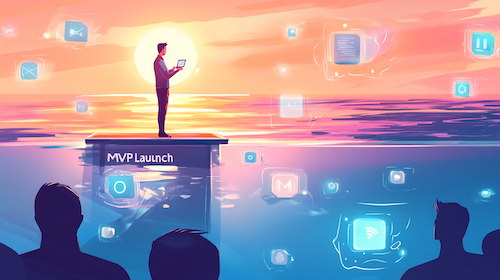Developer Relations to Sales Pipeline: Converting Community into Revenue
Learn how to transform developer community engagement into a predictable sales pipeline with proven strategies.

The Hidden Revenue Potential in Developer Communities
Buffer started as a simple Twitter scheduling tool in 2010. Instead of pursuing traditional marketing, they built a thriving developer community through their API documentation, technical blog posts, and open source contributions. Within 2 years, this community-first approach helped them reach $1 million in annual recurring revenue.
Why Developer Communities Create Unique Sales Opportunities
Developer communities offer something traditional sales channels can't match - authentic technical relationships built on trust and mutual value. When you help developers solve real problems, they become natural champions for your product within their organizations.
Success comes from understanding that manual sales conversations with community members can reveal insights that drive your entire go-to-market strategy. Each interaction is a chance to learn what developers truly need.
Converting Community Engagement to Sales Opportunities
The key is identifying engagement patterns that signal buying intent. This could be developers who:
- Regularly contribute to technical discussions
- Ask detailed questions about enterprise features
- Share your content within their organization
- Request specific use case documentation
These signals help you focus your lead scoring efforts on the most promising opportunities.
Building Your Developer Relations Sales Playbook
Start by mapping out common paths from community member to paying customer. Document:
- First point of community engagement
- Key technical questions asked
- Resources accessed
- Interactions with team members
- Timeline to purchase
This data helps create a repeatable process for high-touch customer success that scales with your community.
Measuring Community to Revenue Impact
Track metrics that matter:
- Community member to qualified lead conversion rate
- Average sales cycle length for community-sourced deals
- Revenue from community-sourced customers
- Customer lifetime value comparison
Use custom marketing dashboards to visualize these metrics and identify trends.
Common Pitfalls to Avoid
- Pushing sales too early in the community relationship
- Neglecting technical documentation and support
- Focusing on quantity over quality of interactions
- Missing signals of buying intent
Remember that demand-driven development starts with understanding your community's needs.
Extra Tip: The Documentation-to-Sales Pipeline
Create targeted documentation for specific use cases and track which guides generate the most engagement. This helps identify valuable features and potential enterprise customers. Use your documentation as case studies to drive sales conversations.
Frequently Asked Questions
How long does it take to see revenue from community building?
Timeline varies, but most successful developer-focused companies see initial revenue within 3-6 months of focused community engagement. The key is identifying and nurturing high-intent members while providing consistent value through technical content and support.
What's the best way to identify sales-ready community members?
Look for members who show specific buying signals: requesting enterprise features, sharing technical requirements, or discussing implementation with team members. Use customer health scoring to track these signals systematically.
Should I hire dedicated developer advocates or sales engineers first?
Start with technical founders handling both roles. This provides direct feedback and helps build an authentic sales process. Scale the team based on community growth and engagement patterns.
How do I balance community support with sales activities?
Create clear internal guidelines for when to transition from community support to sales conversations. Use activity-based triggers to identify when a community member might be ready for a sales discussion.
What metrics should I track to measure community-to-sales success?
Focus on conversion rates at each stage: community member → qualified lead → customer. Track engagement metrics like documentation views, support requests, and feature discussions that lead to sales opportunities.
Recommended Next Steps
1. Start tracking community engagement systematically using product usage analytics
2. Build a basic lead scoring system focused on technical engagement signals
3. Create documentation templates for common enterprise use cases
4. Set up weekly community office hours to identify sales opportunities
5. Implement a process for collecting and analyzing community feedback
Community Content Strategy for Sales
Create technical content that attracts and qualifies potential customers. Focus on detailed implementation guides, integration tutorials, and enterprise use cases. This approach helps identify serious buyers while providing value to the broader community.
Building a Community-Driven Sales Team
Your sales team should understand both technical concepts and community dynamics. They should participate in technical discussions, contribute to documentation, and help solve real problems before discussing commercial opportunities.
Enterprise Community Engagement Model
Develop a framework for identifying and engaging enterprise developers within your community. Create specific content and engagement opportunities that address enterprise needs while maintaining community authenticity.
Common Myths About Developer Community Sales
Myth 1: "Developer communities can't be monetized"
Share this reality check →
Myth 2: "You need a huge community to generate sales"
Share this insight →
Myth 3: "Community building and sales don't mix"
Share this truth →
Taking Action
1. Audit your current community engagement points
2. Map out your community-to-sales conversion process
3. Create a basic lead scoring system for community members
4. Start documenting successful community-to-customer journeys
5. Build a simple dashboard to track community sales metrics
Join the Discussion
Building a developer community that drives revenue isn't easy, but you're not alone. Share your progress and learn from others:
1. Join our X Community to connect with other technical founders
2. List your developer tool on BetrTesters to get feedback from other builders
3. Share your community building journey and help others learn from your experience
Your next customer might be part of our community right now!
First Published:
Updated: